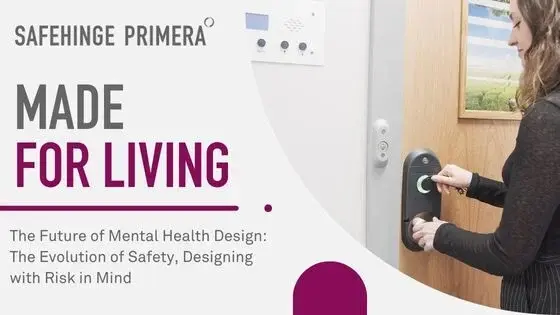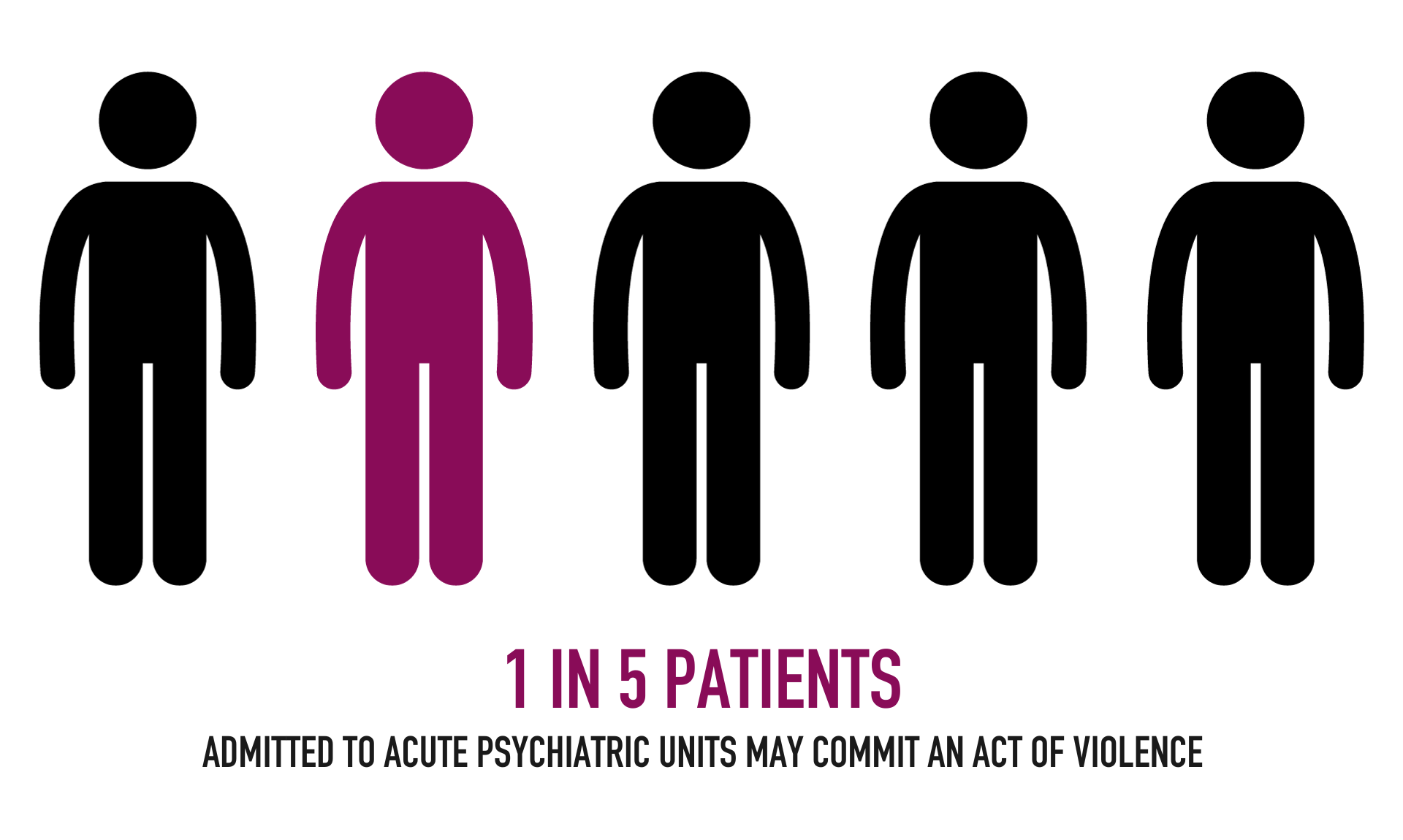Rethinking Behavioral Healthcare to Support Healing and Human Dignity
Welcome to the July edition of Made for Living. This month, we explore a critical question in behavioral health design:
“What does it really mean to design with a true Culture of Care — and how do we embed lived-experience values into the spaces we create?”
In the UK, the National Health Service (NHS) has called for inpatient mental health services to become more trauma-informed, person-centered, and emotionally safe. Their Culture of Care framework sets new expectations for creating environments that empower people — not just contain them.
While this framework is rooted in the UK context, its values echo universal principles in trauma-informed care (TIC) and behavioral health design in the United States: safety, dignity, empowerment, and recovery. But too often, care spaces feel sterile and restrictive — reinforcing trauma rather than supporting healing.
Take this simple example: if you checked into a hotel room with no lock on the door, would you feel safe enough to sleep?
Design can change that. When care environments are shaped with service users — and supported by products that promote autonomy — we can redefine what safety means, for both patients and care teams.

The Silent Language of Design
Spaces communicate without words. Whether we recognize it or not, the built environment shapes how we feel, behave, and heal.
Institutional design choices — harsh lighting, fixed furniture, excessive noise, inaccessible private spaces — can trigger distress or disempowerment. And in behavioral health settings, where safety and emotional regulation are critical, that impact is magnified.
But when design decisions communicate warmth, control, and dignity, spaces become therapeutic tools. Trauma-Informed Design (TID) is about making those messages intentional — aligning architecture, materials, layout, and products with the values of trauma-informed care.
Every design choice becomes a signal: You’re safe here. You’re valued. This is a place of care.
A Shift Toward Healing-Centered Spaces
The evolution is already happening. Across the US and globally, behavioral health organizations are embracing environments that do more than house patients — they foster recovery.
In the UK, the NHS’s Culture of Care framework (launched in early 2024) covers over 200 inpatient wards. Its 12 commitments center on empathy, trust, and co-production — echoing the US SAMHSA framework for trauma-informed care.³
One of its most powerful messages?
“Nothing about me without me.”
That principle drives inclusive design: involving patients, families, and care teams in how spaces are created and used.
Clinical Perspective: Dr. Jude Graham, UK Behavioral Health Leader
“Being trauma-informed means considering how every part of care — from personalized planning to the physical environment — works together.
The built environment often feels expensive or difficult to change, but it’s one of the most impactful parts of care.”
— Dr. Jude Graham, Director of Allied Health & Psychological Professions, NHS Foundation Trust
The shift is clear: moving away from checklist-based risk management toward a more human view of safety — one based on relationships, autonomy, and emotional trust.
Translating Trauma-Informed Principles into Practice
TID isn’t just a clinical philosophy — it’s a full organizational and environmental shift. Backed by research from sources like the Office for Health Improvement and Disparities (UK) and organizations like Malvern Behavioral Health (US), the six core principles of TID can translate directly into real-world design decisions.¹ ²
| Principle | Description | Design Translation |
|---|---|---|
| Safety | Ensure physical and psychological safety for patients and staff. | Clear sightlines, natural lighting, low-stimulation zones, secure but non-restrictive doors, durable yet calming materials. |
| Trust + Transparency | Foster trust through honesty and openness. | Natural light, legible wayfinding, authentic materials, staff visibility without surveillance. |
| Peer Support | Encourage healing through shared lived experiences. | Flexible gathering spaces, homelike furnishings, accessible outdoor areas. |
| Collaboration | Share power and involve people in decisions. | Writable/tackable surfaces, co-created spaces, movable furniture for personalization. |
| Empowerment + Choice | Support voice, agency, and control. | Adjustable lighting, variety of furniture, operable windows, customizable personal space. |
| Cultural Sensitivity + Humility | Respect diversity and reduce retraumatization. | Inclusive imagery, local art, gender-neutral restrooms, non-institutional finishes. |
This framework isn’t theoretical. It’s a design toolkit for translating values into action — empowering decision-makers to create spaces that are safe and sensitive, functional and emotionally responsive.
And at the center of it all: choice. For people recovering from trauma, choice is not a luxury — it’s the starting point for healing.
Beyond What’s Visible: Sensory and Biophilic Design
To fully realize trauma-informed care, we must go beyond surface-level design and engage the senses.
-
Sensory Design focuses on acoustics, lighting, textures, and intuitive navigation — managing what people see, hear, feel, and even smell.
-
Biophilic Design brings nature indoors: natural light, greenery, wood textures, and outdoor views. These elements can reduce cortisol, improve sleep, and elevate mood.¹²
Together, these strategies support psychological and physiological safety — and turn care spaces into calming, restorative environments.
Real-World Impact: Healing Spaces Are Smart Investments
When trauma-informed principles are embedded into design, everyone benefits:
-
Patients feel safer, more empowered, and more engaged in recovery.
-
Staff feel more supported and less burned out.
-
Facilities experience fewer incidents and smoother operations.
The result? Better care and stronger ROI.
And importantly, trauma-informed upgrades don’t always mean large capital investments. Sometimes the smallest changes — adjustable lighting, lockable doors, acoustics — deliver the biggest impact.

Safehinge Primera’s Approach: A Human-Centered Partnership
At Safehinge Primera, we know it’s not just about installing better doors — it’s about building better cultures.
We don’t drop in with a spec sheet and disappear.
We stay. We listen. We help navigate the change together.
Every product is part of a bigger picture: making hope visible through design. Because when care environments offer comfort, choice, and connection, they help people believe that healing is possible.
Hope in a quiet room.
Hope in a warm meal.
Hope in a sense of safety.
And hope — as we’ve learned — is the gateway to recovery.
Ready to Design with a Trauma-Informed Mindset?
Whether you're planning a new behavioral health facility or looking to improve existing environments, Trauma-Informed Design is a powerful step toward better care.
Let’s co-create spaces that restore, empower, and support — together.
👉 Contact us to start your trauma-informed design journey.






